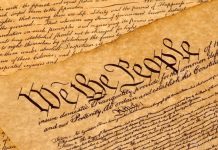This article is written by Rimsha Riyaz, a student of BA LLB (Hons.) at Jagran Lakecity University, School of Law, Bhopal. This article shall give an overview of the major differences between the notions of liberalism and conservatism.
It has been published by Rachit Garg.
Table of Contents
Introduction
The broad differentiation of political and economic views or affiliations is done mainly into two notions, conservative and liberal. These two notions can be called opposites of one another. The meaning of both these terms differs with the context in which they are used, whether political, social, psychological, or economic. The difference between the two lies mostly in the level of acceptance, tolerance, individualism, and liberty. The term ‘liberal’, as the name itself suggests, connotes a higher level of liberty and openness both in society and in the government. The liberals are inclined toward the left-wing and support autonomy for federal states and seek to establish a welfare state for the providence of healthcare and employment opportunities for all citizens. The term ‘conservative’ means the opposite of liberal. A conservative is averse to change in the current society and supports the right-wing which is anti-federalist, supports limited governance and privatisation, and is less tolerant of differences.
What is meant by Liberal or liberalism
A person who espouses or is a firm believer in the ideology of liberalism is called a liberal. Liberalism as an ideology cannot be marked as a set of fixed values of liberty, equality, tolerance, human rights etc. But the philosophy has different connotations with the changes in time. The definition of liberalism differed from historical movements and had a different meaning in different contexts and periods. The liberal ideology in medieval times was associated with the bourgeoisie movements and was seen as a pro-revolutionary ideology. It was signified by the emancipation of the oppressed and was the driver of social change coupled with economic and political change. The core values of liberalism have remained equality and personal liberty throughout history.
Though liberalism at first enunciated the value of liberty in all aspects of human life, its stand on the economic liberty of individuals has changed. According to the classical theory of liberalism, an individual had the liberty to make economic decisions and was responsible for his welfare. This notion, however, changed due to various historical events, the most important of which was the Great Depression of the 1920s. This led to the emergence of the idea of a welfare state and the responsibility of the state to stabilise the economy through regulation of the market. At this time, the ideas of laissez-faire capitalism were condemned and disliked. The theory of social contract also signified the role of the state as a limiter of individual freedom for the welfare of the citizens. This new concept of liberalism was known as neoliberalism.
Modern liberals follow the idea of liberalism as a mixture of both types of liberalism, with their main focus on the core principles of the ideology. Liberals exist in almost all countries and also influence the policy-making of the state they live in. The liberals have different stands on different social, political and economic issues. For example, their stand on various issues like abortion, religious freedom, immigration, etc. upholds personal liberty over all else.
What is meant by Conservative or conservatism
A conservative is a person who is a firm believer in the ideology of conservatism. Conservatism as an ideology is popular in American and European politics and is marked by an aversion to change and a preference for stable societies and strong governments. It is deeply rooted in the idea of pragmatism, according to which change is desirable only when it is necessary. Thus, conservatives are right-wingers and have an anti-revolutionary stance. Traditional conservatives want the preservation of traditional values and institutions like the government and the church, which are not to be changed. They believe that the best response to natural changes in society is pragmatism. It is a type of decision-making best suited for a particular circumstance. Traditional conservatives do not see humans as individual beings but as a part of social groupings. They hence lack perfection and need to conduct regulating authority. Because of this, the conservatives support state intervention in the economy and market.
Modern conservatives, however, have some differences in ideas as compared to traditional conservatives. Modern conservatives, known as the New Right, espouse a free market and capitalism and reject the idea of pragmatism. They have positive thinking of human nature and take them as rational beings who can make their own decisions without them being controlled by traditions or social institutions. Hence, they propound the idea of free markets and that humans deserve a great amount of freedom in the economic sphere.
Difference between liberalism or conservatism
There are several differences between conservative and liberal ideologies. The two ideologies differ in the following aspects:
Stability
The earliest concepts of liberalism and conservatism differed based on stability. The ideology of conservatism prefers stability and is concerned about the order of society. Conservatives do not want change and hence want to maintain the status quo. The liberals, however, are open to change and reform and hence do not desire stability in society.
Morality
Due to the desire of conservatives to preserve their tradition and social institutions like religion, they do not bother about what is right or wrong as long as it is done by the authorities. Liberals are concerned about what is right or wrong and always question the decisions of the authorities.
Openness to differences
The conservatives are less open and are reluctant to accept differences because of their desire for stability and the preservation of traditions. Liberals are open to differences and are ready to accept them. They are inclusive and less concerned about preserving traditions.
Core values
The ideology of liberals is based on the core values of liberty, equality, and human rights. These core values, for them, are above all traditions and state actions. The conservative ideology, on the other hand, is based on the preservation of tradition and pragmatism. All decisions of the state are obeyed by the conservatives, even if they go against the human rights of the citizens.
Free market
The ideology of liberals, though supporting liberty, does not favour a free market system based on the flow of demand and supply without state intervention as it focuses on the responsibilities of the state to fulfil the basic needs of the citizens. This is not the case with conservatives. Conservatives who do not care about any other freedoms or rights of citizens promote a free market system free from state intervention wherein the individual is allowed to make his own economic decisions.
Social welfare
Liberals are of the view that the state is responsible for the overall welfare of the citizens and should act as a welfare state by providing basic amenities to all. Conservatives are of the view that the state is not responsible for the welfare of the citizens and that the citizens are independent to cater to their own needs in all aspects.
Federalism
The liberals are pro-federalists and support the decentralization of power to prevent the accumulation of power in a few hands. They are in favour of providing autonomy to the federal states in all aspects. The conservatives, on the other hand, do not support federalism. According to them, federal states should be granted less power than the centre. They support a strong national centre and a strong defence and foreign affairs strategy.
Table of comparison
| PARAMETERS | LIBERAL | CONSERVATIVE |
| Stability | Do not desire stability | Desire stability |
| Morality | Have a sense of right and wrong | Not concerned about right or wrong as long as the decision is made by state authorities |
| Openness to differences | Open to differences | Do not desire change hence not open to differences |
| Core values | Liberty, equality, human rights | Preservation of traditions, pragmatism |
| Free Market | Do not support a free market system or laissez-faire capitalism | Support a free market system without the intervention of the state |
| Social Welfare | Supports a welfare state | Does not support a welfare state |
| Federalism | Pro- federalists | Anti-federalists |
Conservative liberalism
A variant of the amalgamation of the two ideologies of liberalism and conservatism is conservative liberalism. It is a less radical variant of classical liberalism and supports economic liberalism along with social and ethical traditions. It bridges the gap between the differences between liberalism and conservatism and is a combination of some features from both ideologies. Conservative liberals promote both liberal policies and religious moralism.
Conservative liberalism emerged in 19th century France when conservative liberals were seen as the opposite of progressive liberalism. Progressive liberalism, also known as social liberalism, considers liberty and equality supreme. Conservative liberalism derived its core values not from classical liberalism but from ideas of virtue and the common good, the church and the state, thus having a conservative foundation. They were moderates who considered radicalism as opposed to the well-being of society.
Conclusion
Therefore, it is clear that the two most prevalent ideologies in American and European politics are opposite to each other. The ideologies are not just different in their core values but in all aspects of social, political and economic. These ideologies, however, are non-existent in their purest forms and, hence, in reality, the line that divides them is blurred. One such example of this grey area is conservative liberalism, which exists in American politics and contains the elements of both conservatism and liberalism. An instance of this ideology can be seen in the support of conservative liberals for personal liberty and religious moralism.
Frequently Asked Questions (FAQs)
How do conservatives and liberals differ on social issues?
The conservatives and liberals have the opposite stands on most of the social issues that prevail. The most common issues in society which are also the most controversial are laws about immigration, abortion, LGBT rights, civilian gun ownership and the death penalty. While the liberals support personal liberty they oppose anti-immigration, anti-abortion and homophobic laws, and gun ownership and oppose the death penalty. The conservatives oppose abortion rights, gay marriage, and immigration and support civilian gun ownership and the death penalty.
Are liberals and libertarians the same?
While the liberals promote social welfare and desire a welfare state, libertarians are their actual opposite who want a limited role of the government in the economic sphere. Liberals do not favour a free market system and desire state intervention in maintaining stability in the market and the economy even if it hampers the economic freedom of the individual. The libertarians believe that the state is prone to corruption and hence limited governance is required in the flow of the market. They believe that resources are better allocated in the market by the private actors than the public sector. It is only in the economic sphere that the liberals and the libertarians differ. In all other spheres, they share the same stances.
What is meant by liberal conservatism?
One such doubt that comes to mind is whether conservative liberalism and liberal conservatism mean the same things. It is wrong to assume that they are the same. Conservative liberalism, as earlier discussed, is an ideology wherein both conservatism and liberalism coincide and takes some features of both ideologies. Neoliberalism can be said to be its twin. Liberal conservatism is, however, different from both. It is a form of conservatism that instead of preserving religion or traditions, seeks to preserve the liberal institutions so that liberalism is not overpowered by any other ism in its place due to its ever-changing nature. Therefore, conservative liberalism is a political stance that ironically preserves liberal institutions through conservatism.
References
- https://www.diffen.com/difference/Conservative_vs_Liberal
- http://www.differencebetween.net/miscellaneous/difference-between-conservatives-and-liberals/
- https://askanydifference.com/difference-between-liberal-and-conservative/
- https://www.tutor2u.net/politics/reference/conservatism
- https://blog-ipleaders-in.cdn.ampproject.org/v/s/blog.ipleaders.in/ideology-of-liberalism-all-you-need-to-know-about/?amp=1&_gsa=1&_js_v=a9&usqp=mq331AQKKAFQArABIIACAw%3D%3D#amp_tf=From%20%251%24s&aoh=16564402122718&referrer=https%3A%2F%2Fwww.google.com&share=https%3A%2F%2Fblog.ipleaders.in%2Fideology-of-liberalism-all-you-need-to-know-about%2F
- https://amp.theguardian.com/commentisfree/2011/aug/15/liberalism-political-economic-different-ideologies#amp_tf=From%20%251%24s&aoh=16565250032211&referrer=https%3A%2F%2Fwww.google.com
Students of Lawsikho courses regularly produce writing assignments and work on practical exercises as a part of their coursework and develop themselves in real-life practical skills.
LawSikho has created a telegram group for exchanging legal knowledge, referrals, and various opportunities. You can click on this link and join:
Follow us on Instagram and subscribe to our YouTube channel for more amazing legal content.
 Serato DJ Crack 2025Serato DJ PRO Crack
Serato DJ Crack 2025Serato DJ PRO Crack










 Allow notifications
Allow notifications



